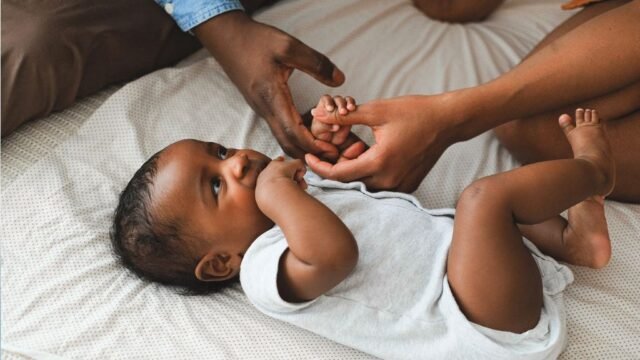Jenecia Smiley | Saturday November 16, 2024, | 1:07 am
The phenomenon of declining birth rates is not unique to Jamaica; it is a global trend that has far-reaching implications for society. However, the effects in Jamaica are particularly pronounced within the education sector, where lower enrollment numbers are reshaping the dynamics of schools, impacting teachers, and forcing a reevaluation of how the country approaches development and sustainability.
Globally, birth rates have been declining for decades. For instance, Japan’s birth rate is among the lowest in the world at 1.3 births per woman as of 2023, far below the replacement level of 2.1 needed to maintain population levels. Germany reports a similarly low rate of 1.6, while the United States’ birth rate has declined to 1.7 in recent years. In Jamaica, the fertility rate has fallen to 1.9 births per woman, a significant drop from 4.5 in the mid-1970s. These statistics reflect a seismic shift in societal priorities and economic pressures, with profound consequences for schools and communities alike.
The reasons behind falling birth rates are multifaceted, but they often boil down to economic challenges, lifestyle choices, and the changing perception of parenthood.
- Economic Pressures and Job Market Realities: Salaries in Jamaica remain a significant barrier for many individuals considering starting a family. The average monthly salary for many professions, including teachers, often falls short of covering the cost of living, let alone the additional expenses of raising a child. When potential parents weigh their current financial stability against the long-term financial demands of child-rearing, many opt to delay or forgo parenthood altogether.
- Lifestyle and Societal Changes: The younger generation is increasingly prioritizing personal development, education, and career advancement over starting families. This shift is driven partly by the desire for financial independence and the fear of losing autonomy. For many, having a child represents a drastic lifestyle change that includes reduced social outings, fewer career opportunities, and the necessity of stringent budgeting. The thought of trading nights out and spontaneous travel for diapers and daycare costs is daunting for many young people.
- The Drastic Life Changes a Baby Brings: Parenthood brings significant responsibilities and a need for stability. Many prospective parents cite concerns about whether they can provide a safe and nurturing environment for a child. This includes worries about access to healthcare, education, and housing. With these considerations in mind, the idea of starting a family becomes an overwhelming prospect rather than an exciting milestone.
The Impact on Schools
In Jamaica, declining birth rates have translated into lower enrollment numbers in schools. While smaller class sizes might seem beneficial for individualized attention, they also result in reduced funding for schools, as allocations are often based on the number of students. This financial strain affects resources, teacher salaries, and the overall quality of education. Teachers, in particular, are bearing the brunt of this shift. Already facing low wages and limited resources, educators are now tasked with adapting to an uncertain future where their profession may become less valued due to shrinking demand.
The trend of low birth rates is not confined to Jamaica. Around the world, many nations are grappling with the consequences of an aging population and a declining workforce:
- Japan: With a birth rate of 1.3, Japan’s population is aging rapidly, leading to labor shortages and a shrinking economy.
- South Korea: South Korea’s birth rate hit a record low of 0.81 in 2022, the lowest in the world.
- Italy: With a birth rate of 1.2, Italy’s population decline has led to fears of economic stagnation and increased strain on social welfare systems.
- United States: Although not as severe, the U.S. birth rate has fallen to 1.7, raising concerns about long-term economic sustainability and immigration’s role in offsetting population decline.
These international examples show that the challenges Jamaica faces are part of a broader global issue. However, the solutions must be tailored to Jamaica’s unique cultural, economic, and social context.
Recommendations for Addressing Low Birth Rates
Tackling the issue of low birth rates requires a multifaceted approach that considers the economic realities, societal expectations, and long-term goals of the nation. Here are some potential strategies:
- Economic Support for Families:
- Increase salaries for professions like teaching and ensure wages across industries are livable.
- Offer tax incentives for families with children to reduce the financial burden of parenthood.
- Provide subsidies for childcare and education to make raising children more affordable.
- Supportive Work Policies:
- Encourage employers to adopt family-friendly policies, such as flexible working hours, parental leave, and remote work options.
- Develop initiatives that help parents re-enter the workforce after taking time off to raise children.
- Promoting a Balanced View of Parenthood:
- Shift societal narratives to highlight the joys and rewards of parenthood while providing realistic resources and support for prospective parents.
- Increase access to counseling and education about family planning and parenting to alleviate fears and misconceptions.
- Investing in Education:
- Strengthen the education system to prepare future generations for the challenges of parenthood and workforce demands.
- Ensure teachers receive fair compensation and professional development opportunities to sustain the quality of education in the face of demographic shifts.
Addressing the issue of low birth rates requires more than policy changes; it demands a cultural shift. Young people need to feel that starting a family is a viable and fulfilling option, not a financial burden or a loss of independence. This means creating an environment where children are seen as a joy and a responsibility shared by families, communities, and the nation as a whole. Jamaica has an opportunity to learn from global examples while charting its path forward. By investing in its people and creating policies that support both parents and educators, the country can ensure that its schools remain vibrant and its communities thrive. The question is not just how to reverse the trend of low birth rates but how to build a society where families can flourish and children have the opportunity to succeed.


